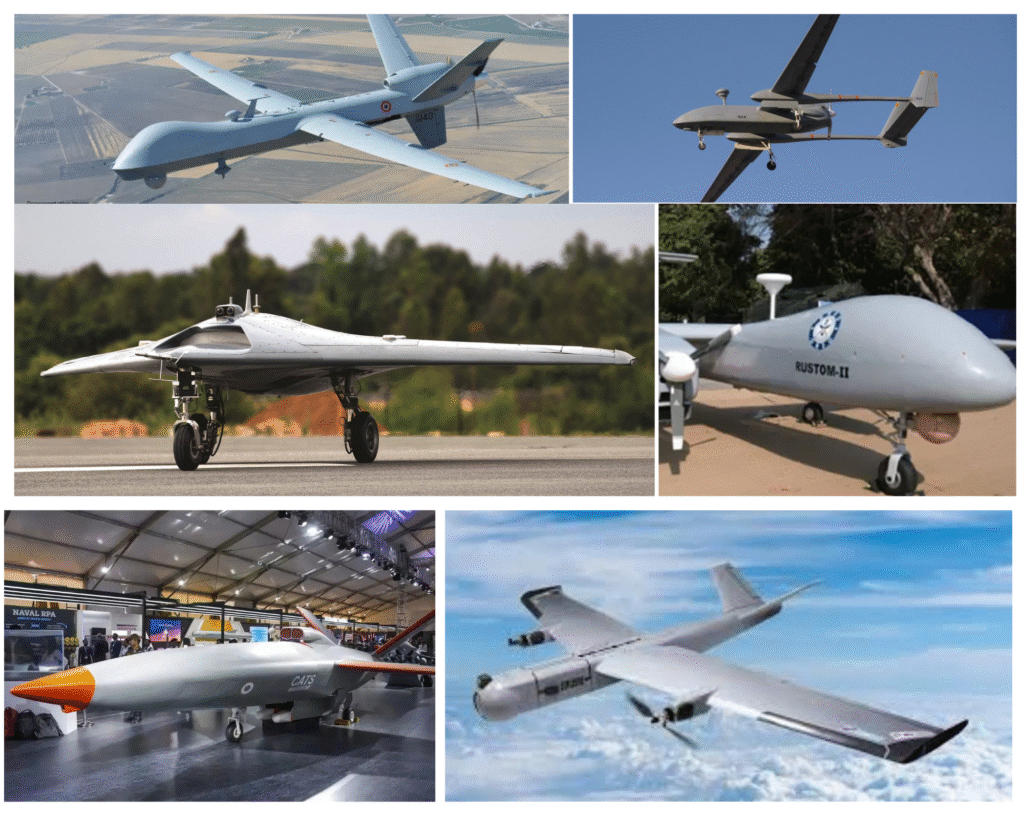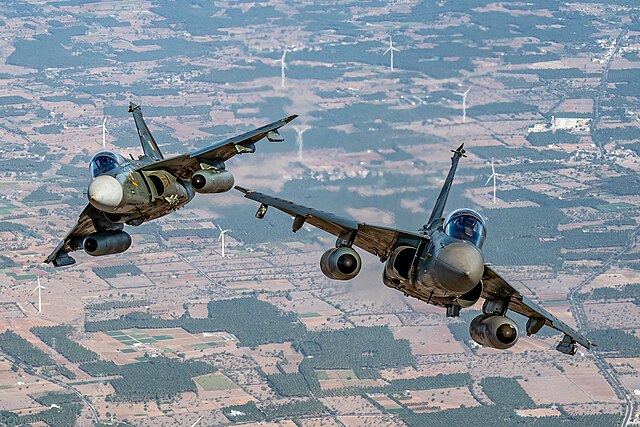Rise of Unmanned Aerial Systems: Drones in Indian Defence
India is witnessing a dramatic transformation in the realm of military technology, with unmanned aerial systems (UAS)—popularly known as drones—becoming the linchpin of its future-ready defence ecosystem. Benefiting from policy support, indigenous innovation, and operational learnings from recent conflicts, the Indian military’s advances in stealth UAVs and tactical drones are reshaping battlefield doctrine and national security priorities. With India’s UAV market projected to reach $4 billion by 2030, the momentum is only increasing.
Dawn of Drone Power in India
India’s drone revolution is driven by an urgent need for rapid modernization to match pressures from adversaries and asymmetric threats. Indigenous innovations like the Rudrastra Hybrid VTOL UAV, swarm drones from NewSpace Research, and tactical loitering munitions have empowered the Indian armed forces with precision, agility, and cost-effectiveness. Notably, the HAL Combat Air Teaming System (CATS) will integrate manned fighters with swarming stealth UCAVs for synergistic air dominance—ushering in an era where drones are as essential as rifles for frontline soldiers (read more about AMCA).
The Game-Changer: Stealth UAVs
In May 2025, defence analysts were electrified as images of a sleek, stealth-shaped UAV, sporting a striking red test livery, surfaced from the Indian Air Force’s Aircraft and Systems Testing Establishment (ASTE) in Bengaluru. Designed for minimal radar cross-section with flying wing geometry and smooth blended surfaces, this prototype embodies the very latest in radar-evading technology. Its development is closely aligned with India’s autonomous warfare strategy, reflecting trends among leading air forces worldwide. Though primarily a testbed, this stealth UAV signals India’s commitment to indigenous low-observable combat drones capable of surveillance and deep strike in contested airspace, minimizing risks to pilots and maximizing operational impact.
DRDO Ghatak and SWiFT: India’s Stealth Ambition
The heart of India’s stealth drone program lies in the Defence Research and Development Organisation’s (DRDO) Ghatak project, supported by its SWiFT (Stealth Wing Flying Testbed) demonstrator. As of December 2023, SWiFT completed its seventh autonomous flight, validating core technologies such as carbon composite airframes, advanced avionic suites, sensor fusion, and AI-enabled autonomous navigation. Further, Ghatak is envisioned as a fully indigenous “flying wing” stealth UCAV capable of precision strikes and penetration of enemy air defenses—a capability set rapidly nearing operational maturity. These assets are set to plug directly into India’s C4ISR network, promising a quantum leap in real-time battlefield coordination and survivability (read more about indigenous defence manufacturing).
Army’s Drone Doctrine: Every Soldier an Operator
With emerging doctrines like “Eagle in the Arm,” the Indian Army is institutionalizing UAS at every level—from infantry platoons equipped with tactical FPV drones to Divyastra batteries for loitering munitions and reconnaissance. Drone training academies are proliferating across the country, and counter-UAS systems now form a crucial shield for high-value assets. The driving vision: every soldier trained as a drone operator, extending battlefield awareness and striking power even in inaccessible or hostile locations. By 2027, over 80% of frontline battalions are expected to incorporate trained drone operators.
Industry Surge and Strategic Partnerships
India’s commercial and defence UAV market is booming, propelled by “Drone Shakti,” Production-Linked Incentives (PLIs), and ‘Atmanirbhar Bharat’. The country expects to double its UAV fleet between 2025–2030, with key roles for private players, joint ventures, and global tech partners. Stealth coating breakthroughs by Hyderabadi companies and rapid-paced development cycles—like the CATS Warrior drone delivered in just 14 weeks—demonstrate world-class engineering and resilience. Strategic imports of US MQ-9B and Israeli Heron/Harop drones supplement indigenous efforts, maximizing multi-domain versatility (Operation Sindoor).
Engaging the Future: Why Drones Will Keep Dominating Defence
Operation Sindoor and the recent border skirmishes with Pakistan and China highlight the real-world impact of drones in Indian defence. Loitering munitions, swarm tactics, and precision drone strikes have tipped the balance in favor of agile, networked warfare—forcing adversaries to rethink strategies. As India continues to test and refine stealth UAVs, the promise is clear: tomorrow’s battlefield will be shaped by silent sentinels and invisible force-multipliers, keeping soldiers safer while multiplying lethal reach.
Interesting Fact: India currently operates over 150 tactical UAVs and aims to expand to 300+ by 2030, reflecting rapid adoption and modernization.
Conclusion: The Vigil Unmanned
The rise of unmanned aerial systems marks a historic inflection point for Indian defence. From stealth pioneers at ASTE Bengaluru and DRDO Ghatak to the frontline “Eagle in the Arm” doctrine, drones are redefining what it means to defend, strike, and prevail in 21st-century warfare. This journey is just beginning—every new flight trial and operational deployment offers a glimpse into a future where Indian ingenuity, policy, and strategic vision put unparalleled aerial power within arm’s reach.
Question to Readers: Do you think India’s stealth drones can rival American and Chinese UCAVs? Share your thoughts below—DefenceNiti will continue to track every flight test and deployment.


